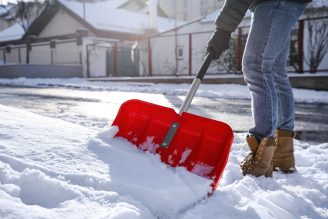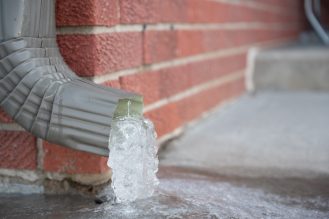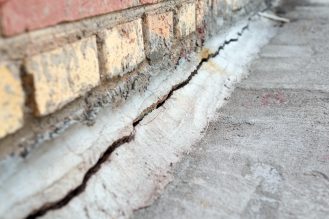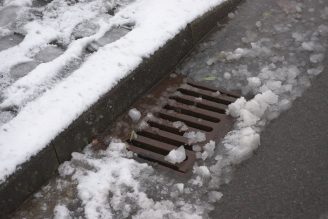Protect Your Home and Property from Winter Weather Flooding
City services | February 3, 2023
Winter can be hard on a home, whether it’s new or old. The winter elements, including everything from snow, sleet, ice and wind, can lead to water damage and flooding in your home or on your property. These tips will help protect your home, our stormwater system and the environment.
Snow clearing and outdoor maintenance
While it’s important to shovel your driveway, walkways, stairs and sidewalks, don’t forget about other key areas including around your home’s foundation, exterior exhaust pipes and window wells.
- After a snowstorm, you will want to pile snow at least 2 metres (6 feet) away from any building’s foundation to avoid water damage when it melts. Water collecting next to basement foundations can find its way indoors through small cracks and openings.
- Keep your exterior exhaust pipes and vents for your furnace, dryer, stove, or fireplace, clear of snow or ice.
- Keep an eye on window wells if your home has them and clear out some of the snow if it starts to build up. With periods of freeze and thaw, having the extra snow inside the window well can cause water to seep into the basement.
- Take a moment and look up to your roof because when the surface of your roof is warm enough to melt the snow but the air temperature around is cool enough to freeze it, this can lead to water being able to penetrate your home.
- Ensure that downspout extensions can flow freely away from your home and that any roadside catch basins or private catch basins on your property (in your driveway or backyard) are clear of snow and ice.
- Make note of any areas where the soil slopes towards your home to correct in spring. To divert water away from your home, the ground should always slope away from your basement walls around the property.
If you are unable to safely clear a roadside catch basin, residents can call 311 to report blocked catch basins and for maintenance.
Disconnect your downspouts
A downspout is the vertical pipe that drains water from the eaves troughs attached to the edge of your roof. Your home will likely have several downspouts, draining water from your roof down to the ground or into pipes next to your foundation walls.
Disconnecting these downspouts from underground connections helps redirect water away from your home’s foundation so that it flows into roadside catchbasins or onto your lawn or garden where it can be absorbed to flow overland to the City’s stormwater system. In addition to directing water away from your home, this also helps slow the flow of water into the stormwater pipe system, further reducing the risk of flooding.
Stormwater is the rain and melted snow flowing from your property that drains into streets, ditches, storm drains, underground pipes, local creeks and the Credit River into Lake Ontario. During periods of heavy rain or melting snow, ensuring water flows safely away from your home and neighbouring properties can help reduce the risk of basement flooding and water damage.
Ideally, you should disconnect your downspouts and extend them 2 metres (6 feet) away from your home’s foundation or other structures. However, ensure that you avoid redirecting the water toward public or private properties, including pathways, sidewalks and driveways. If this water refreezes, it can create dangerous icy hazards. Residents can follow our online step-by-step guide for more information on how to disconnect roof downspout.
For more information on how to disconnect your roof downspout by yourself, residents can follow our online step-by-step guide. Otherwise, connect with a licensed contractor.
Indoor maintenance
Some indoor maintenance activities can also help reduce the risk of flooding. Homeowners should check for leaks in basement walls, floors, windows, or foundation and ensure ground-level windows and doors are properly weatherproofed and in good repair.
Learn how to reduce the risks and impacts of flooding inside your home.
If you live in a high-risk area, consider having an electrician raise the location of electrical outlets, raise storage containers and possibly your appliances off the floor and move items of value out of the basement.
Prevent pollution
As an important reminder, water that flows into catch basins drains into the natural environment. Doing our part to prevent pollution helps protect plants, animals and our drinking water supply from Lake Ontario.
For homeowners, keep litter, pet waste, leaves, grass and other debris out of street gutters, catchbasins and ditches. Likewise, be mindful of cleaning products, fertilizers, auto fluids and chemicals going down stormwater drains.
For more information, visit mississauga.ca/stormwater or call 311 (905-615-4311 outside City limits).
Follow @saugastormwater on Instagram for the latest information and tips from the City’s stormwater programs.
Tags
Media Contact:
City of Mississauga Media Relations
media@mississauga.ca
905-615-3200, ext. 5232
TTY: 905-896-5151



